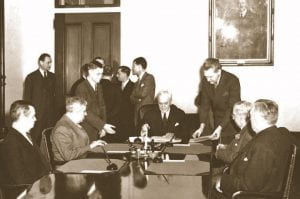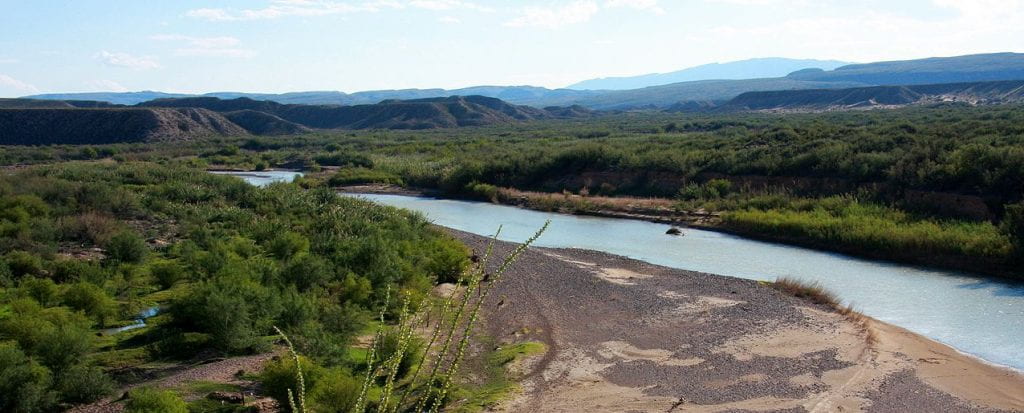Professor José Luis Castro, El Colegio de la Frontera Norte (COLEF) or College of the Northern Border – Monterrey, Mexico
In this issue’s Q&A, Texas+Water Editor-in-Chief, Dr. Todd Votteler, interviews Jose Luis Castro-Ruiz, a professor-researcher at El Colegio de la Frontera Norte in Monterrey, Mexico. He holds a Ph.D. degree in Urban and Regional Planning from the University of Southern California.
His main research interests include urban development problems, urban water management, and trans-boundary water management along the border region between the U.S. and Mexico. His academic production includes works in both Spanish and English languages. He has done consulting work for different government levels in Mexico and the U.S., as well as international environmental agencies.
Can you give some examples where bi-national cooperation between the U.S. and Mexico has been successful and identify why you thought it succeeded?

In relation to our common water resources, and under the 1944 Water Treaty umbrella, there are a number of minutes that may be considered the product of successful negotiations between the two governments. Examples of this are those minutes addressing the sanitation problems along the U.S.-Mexico border between 1958 and 1998; Minutes 214 and 228, that defined the course of the Rio Grande in the El Paso, Texas/Ciudad Juárez, Chihuahua sector, pursuant to the Chamizal Convention of 1963 that solved the Chamizal dispute, a border conflict over about 600 acres between the two cities, caused by a shift in the Rio Grande or Minute 320 (2015), that established a general framework for bi-national cooperation on transboundary issues in the Tijuana River Basin.
Aside of the above examples, there are a number of local efforts along the common border, not necessarily governmental, which in my view are representative of the historical ties that unite the border communities, and complement the work of International Boundary Water Commission (IBWC)- la Comisión Internacional de Límites y Aguas (CILA). Examples are the same Tijuana River Watershed with initiatives from academia and other non-governmental actors at both sides of the border to address the common environmental problems of those communities, including their water resources. The federalized nature of U.S. government institutions at all levels permits them a great deal of operational autonomy, which in cases like the Tijuana River watershed allows them to organize and lead strategic projects at the local levels for the common benefit of the watershed residents.
The work and perseverance of these groups led actually to the signing of Minute 320 by IBWC-CILA. The same type of initiative is found in the El Paso/Ciudad Juárez area with non-governmental groups addressing the air quality and water problems of the region.
In my view, a central factor behind the success of all these efforts is the willingness to cooperate and work together at any level. The work of the commissioners in the case of IBWC-CILA has been fundamental for both countries to properly address the problems arising from the management of their common water resources. For Mexico, the work of the late Commissioner, Arturo Herrera, was essential to move forward many of the bi-national accords. At the sub-national and local levels there are other factors that intervene. The structural differences in the political-administrative systems that concur at the border represent an important obstacle for bi-national cooperation to take place at the local levels. While the U.S. political system in practice permits a more plural participation of the governmental actors at those levels, the centralized and bureaucratic nature of the Mexican model limits its functions at the operational level (only CILA is responsible for anything that has to do with trans-boundary issues). It is at those levels that the participation of non-governmental actors and groups (stakeholders) becomes fundamental as a bridge to make things happen.
Do you think that the approaches you describe above can succeed today?
Yes, all of the twin cities along the border region share a common history, and in many cases they have developed informal ways to address their common roots and issues. In the lower Rio Grande basin there are examples of informal support between the local governments in emergency cases and bi-national celebrations like 5 de Mayo (Dos Laredos, Brownsville-Matamoros). The Rio Grande Valley and the border cities from Tamaulipas evolved into an urban conglomerate with potential conditions to carry on cooperative work at the local levels for the benefit of their common water resources. Presently, there are insipid and informal ties between some of the groups at both sides of the border (academia, civil society, local governments).

In the Rio Grande Basin, under the 1944 Water Treaty, there is an agreement regarding the amount of water flowing from the U.S. into Mexico and the amount of water flowing from Mexico into the U.S. During times of water scarcity there is often conflict over the timing of deliveries to the U.S. from Mexico out of the Rio Conchos. Are there any strategies that you think the U.S. and Mexico can use to improve relations over the timing of these deliveries?
For me, this is a matter that must be left to IBWC-CILA. In my view, the work of the agency so far has been professional and knowledgeable. Two aspects are essential here: the capacity to understand and recognize the changing nature of the rivers and how to interpret it within the framework of the 1944 Treaty. The same goes to the historical evolution of the drought cycles in the region. During the 1990’s, an unusual situation developed when two consecutive delivery cycles from Mexico were marked by extraordinary drought conditions, that led to a problem never experienced before by the two countries, involving in the end the Presidents themselves. This event certainly left a number of lessons for all actors involved, but for the agency it meant the need for more integrated and collaborative work, improving the communication not only between the two sections, but the different actors at all levels of government and society in each country. There are situations that may reappear in the event of a new drought, like the reactions of regional and local water users at both sides of the border that will have to be faced with the knowledge acquired. The Conchos River watershed, despite being the major Mexican tributary in the 1944 Treaty framework, has challenges of its own. The urban areas in the watershed are growing fast, adding to the demand for water from other sectors, and this needs to be accounted for in terms of impacts due to future drought conditions in the region. In addition to this, different sectors and scholars question the meaning of extraordinary drought used in the Treaty, and call for a redefinition of the term to homogenize the interpretations at both sides of the border.
Currently, there is very little in the 1944 Treaty that discusses how groundwater resources should be allocated. Do your think Minute 242 gives IBWC the scope to negotiate groundwater sharing issues in the future?
Minute 242 represents a landmark on the bi-national efforts to address border groundwater to date, and I think it provides a basic background to work on more elaborated and comprehensive arrangements on the ways both countries must work together to allocate and regulate their common groundwater sources. However, there are legal, political, economic, and information implications of bi-national nature, that need to be solved before that becomes a reality: the differences of both political administrative systems in practice – centralized versus federalized; differences in funding support and data gathering methodologies; and low levels of information exchange, etc. Various scholars on both sides of the border point to these complexities as the reason behind the poor political support for Minute 242 to date, and why both countries prefer to rely on their own national policies to deal with border groundwater management.
The U.S. and Mexico have a long history of peaceful cooperation over transboundary water sharing. How do you think the upcoming changes in Mexico’s administration will impact future cooperation over transboundary water?
Mexico’s bi-national policy has always being one of negotiation and peaceful cooperation. I don’t think this will change, given the plans of the new government to maintain a good relationship with the U.S. in different aspects. Again, it is my belief that whatever changes for better will be the result of the will to cooperate at all levels. The obstacles mentioned here will continue to be there: the structural differences of the political-administrative models that meet at the border; the daily work of IBWC-CILA under the influence of those structural differences, and the efforts of many actors – governmental or non-governmental – at the local levels. As I mentioned before, the role of academia will be essential to reinforce the work done, and establish new bridges. In all of this, the examples of successful experiences of other bi-national regions may be also an interesting element to work with.

